.bmp)
.bmp)
Auce is first mentioned in written sources in 1426 as Owcze. Auce Town was historically formed on the former land of Vecauce Estate when in 1889 the owner of the estate Count fon Medem started to let for sale the less fertile lands for building. The growth of the town was facilitated by the opening of the railway in 1873 as well the overland route to Lithuania. Till the beginning of the World War I the town developed very rapidly, there was an extensive building of private houses, the steam mill, wool carding - mill, brick kiln and distillery were functioning. In 1920 the government of Latvia bought the Vecauce Castle and the estate became the Study farm for the students of agriculture of the University of Latvia. The students made the life in Vecauce more lively. In 1921 the rights to form an independent self- government were given to the village, but already on September 11, 1924 the village was given the status of the town.
Auce town is also known as the only town in Latvia which celebrates its Name’s day every year on March 4.
Auce town coat of arms was confirmed on October 31, 1925. It is black cancer decorated with golden strings on a red background. The Auce coat of arms is based on the Duke Jacob's merchant flag.
Auce town is also known as the only town in Latvia which celebrates its Name’s day every year on March 4.
Auce town coat of arms was confirmed on October 31, 1925. It is black cancer decorated with golden strings on a red background. The Auce coat of arms is based on the Duke Jacob's merchant flag.
Auce city
Vecauce castle
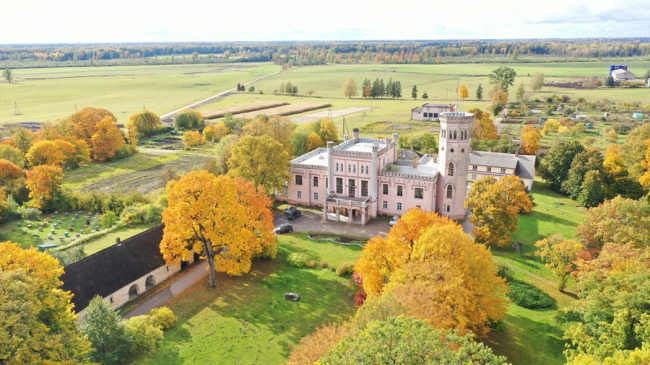

Photo: Guntis Vilberts
Address: Akadēmijas street 11, Vecauce
Phone number: +371 29195959, +371 63745558
E-mail:
Home page: www.vecauce.lv
Vecauce castle is an architectural monument of national significance and was built from 1842 to 1845 in anglo-saxon neogothic style for the Count Medem. It is surrounded by a well- kept landscape park from the 19th century.
The castle has several halls to be rented for seminar and conference events, banquets, weddings and various family parties. Accommodation available for 18 people, double rooms with amenities. The catering is provided by the kitchen of the castle and the food is served from the vegetables, fruits and berries harvested in the own farm.
On the third floor there is a permanent exposition of the history of Vecauce, its owners, the roots of Auce city and the establishment of Vecauce experimental farm in 1921. In the exhibition you can also view reconstructed costumes worn on Latvian territory during the 1980s. Working hours of the castle can be found at www.vecauce.lv
Association “Auce station” antiques repository
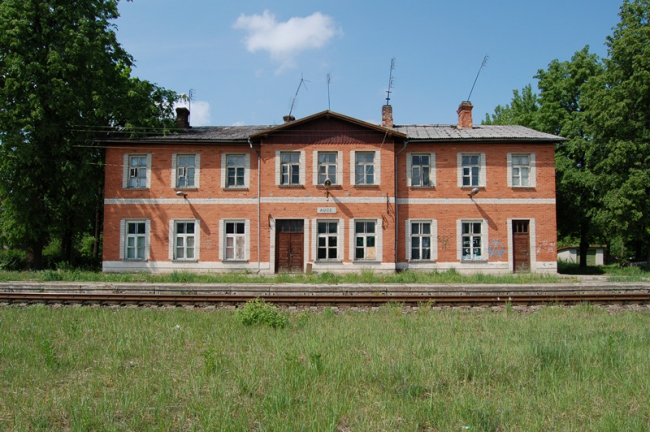

Address: Railway station, Auce
Phone number: +371 28294570
The Auce railway station building was originally built as a wooden structure in 1873, but in 1985 it was bricked up. On the first floor of the station building there is a collection of antiques, which has been accumulated over several years and is supplemented from time to time. The authentic interior of the station has also been preserved - there you can still see both the waiting hall and the cash desk, which for many residents evokes fond memories of the times when a passenger train ran to Auce. The repository includes Soviet-era attributes, old literature, various evidence of the city's history, as well as a small insight into the history of the Auce railway station building itself. Booking is required.
Auce museum
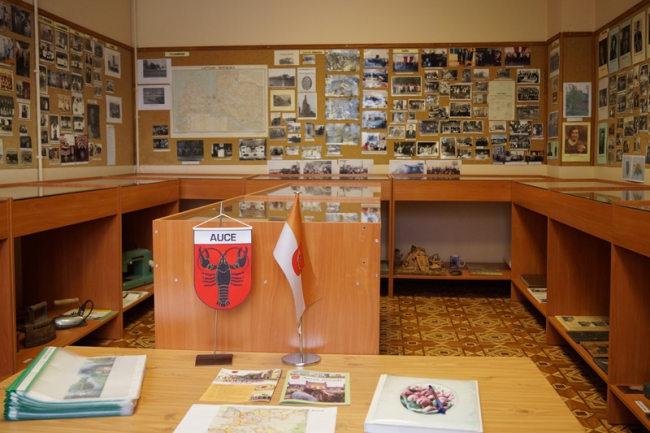

Address: Jelgavas street 1a, Auce
Phone number: +371 63744880, +371 27234216
A collection of local history materials is exhibited in Auce museum. Everyone who is interested can see household objects from different ages. Also there are exposed old pictures and various historical scenes.
The museum is temporarily closed to visitors.
Vecauce Evangelic Lutheran church
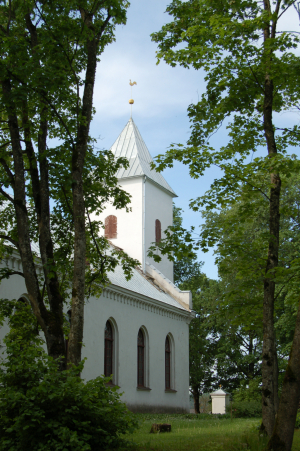

Address: Akadēmijas street 1, Vecauce
Phone number: +371 25908948
E-mail:
Vecauce Evangelic Lutheran church is an architectural monument of national significance. In the beginning it was a wooden building built in 1667. In 1729 the tower was struck by lightning and the church burned down. The brick church was built in 1866. Its interior is interesting.
The visitors are offered to go on an informative tour along the church.
Advance reservation requested.
Phone number: +371 25908948
E-mail:
Vecauce Evangelic Lutheran church is an architectural monument of national significance. In the beginning it was a wooden building built in 1667. In 1729 the tower was struck by lightning and the church burned down. The brick church was built in 1866. Its interior is interesting.
The visitors are offered to go on an informative tour along the church.
Advance reservation requested.
Auce Local Municipality administration
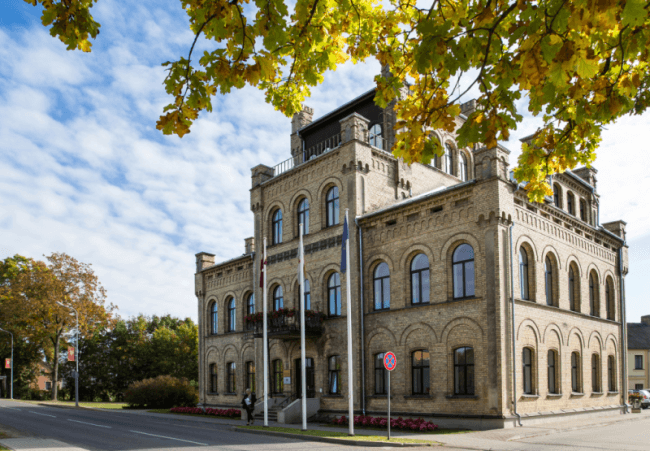

Address: Jelgavas street 1
Auce region Council building was built around year 1905 for the needs of the private school. The designer was the owner of the school Jānis Lagzdiņš and the name of the school was ”J.Lagzdiņš 4 Year private School for girls”. The building material were bricks from the nearby brick – kiln in Vecauce. It worked from 1911 till 1915. After the World War I till 1927/28 the premises held the primary school classes. In the course of time there had been municipality, the police, grain store house, the Communist Party Committee and Training and Research Farm “Vecauce” office. At present there is the Auce local Municipality administration.
Auce Crafts House
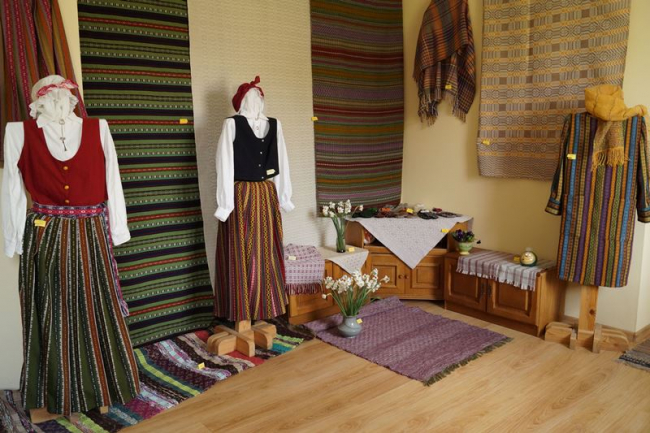

Address: Raiņa street 14, Auce
Phone number: +371 2839698
Folk applied art studio “Auce” work with traditional techniques in skirts, blankets, and table clothes. The weavers uphold old weaving traditions by using traditional patterns of skirts, blouses, scarves and linen tablecloths. The studio provides an opportunity to acquire craft skills in weaving and knitting for interested people of different ages. There is an opportunity to see study workers’ demonstrations and participate in the work creating process in the masters workshop. Also there is a possibility to see and purchese studio masters’ prepared works. Advance reservation requested.
Aspazija’s square
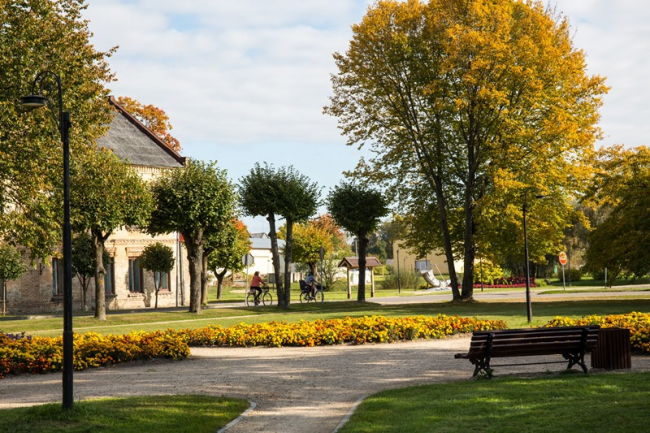

At one time there was a city market place and it was a strict tradition (1920-1940) in Auce to have 6 fairs a year. The square was paved by round boulders which were broken out later in 1954. There were shops, tea houses and pubs on the ground floors around the square. The square got its name because it is next to Raiņa street. At present it is a popular recreation place for the inhabitants of Auce.
The Sun clock
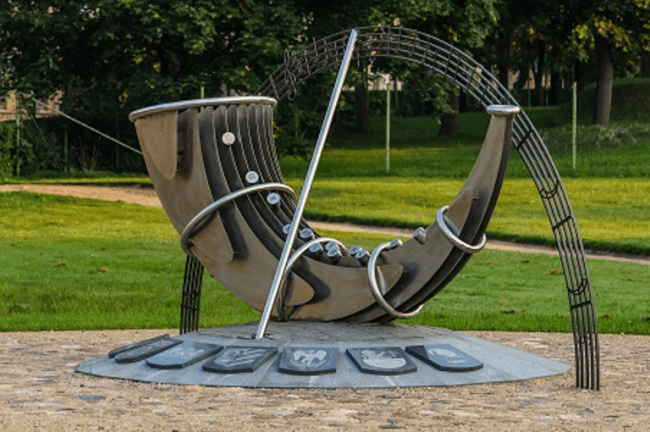

Address: Bēnes street 2
The Sun clock has a form of post horn and can be seen in the coat of arms of Auce municipality surrounded by musical notes, the first beats of which are taken from the county song “Nice life in Vecauce”.
The foundation encloses the coats of arms of the cooperation partners of our municipality.
The sun clock is a specific mechanism reckoning the passage of time by using visual movement of the Sun (and its shadow) caused by the Earth rotation during the day. The form and the location of the sun clock is created in such a way as to tell the time in sunny weather in accordance with the astrological chart. The time is shown by the shadow cast by a slanting obelisk on the hour lines. The hour lines which stand scattered show the summer time of our time zone. During winter one hour should be subtracted. The scientific name of the device casting the slanting shadow is a gnomon and it is not only facing north but also indicates the Polar star. In order to tell the time, the shadow of gnomon should be watched. The hour line (oblique cylinders) to which the gnomon points is the particular hour of the day (depending on context – just was or will be in a moment). The sun clock was opened 25.07.2015 during the XX Auce municipality festival.
Auce Roman Catholic Church
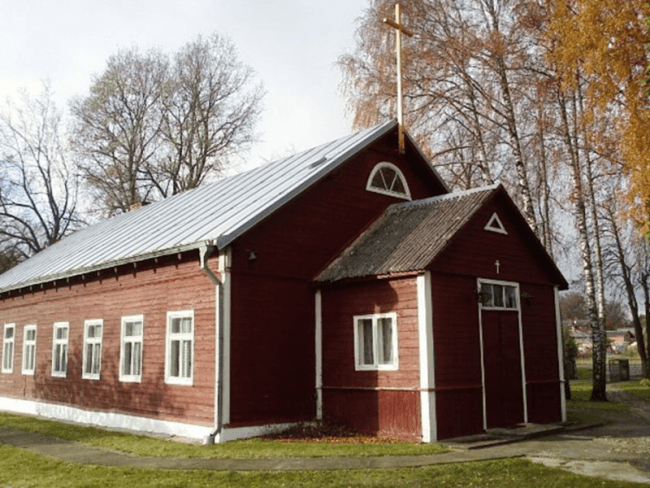

Address: Bēnes street 29, Auce
Phone number: +371 29384441, +371 28885528
Auce Roman Catholic Church is attractive with its original wooden decoration and interior. The Church is built and consecrated in 1938.It is a wooden building, 20 meters tall, 10 meters wide and 2.5 meters high, with a tin roof without a tower. Above the entrance, there is an iron cross on the roof. A building with a partition is divided into halves, one at the end of which is a church, and the other is an apartment and a sacristy. From outside, the church is sewn with boards. A big cross of Misses has been set up in the garden. A view of the Our Lady's grotto, where St. Mary appeared. Advance reservation requested.



